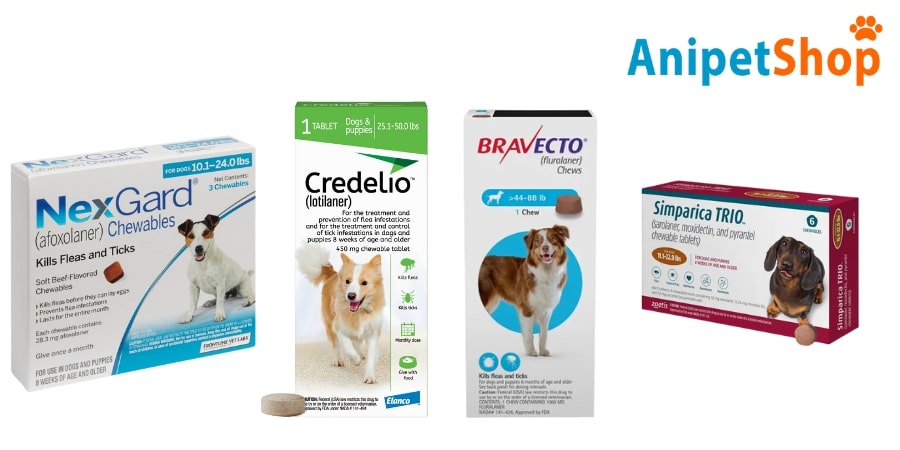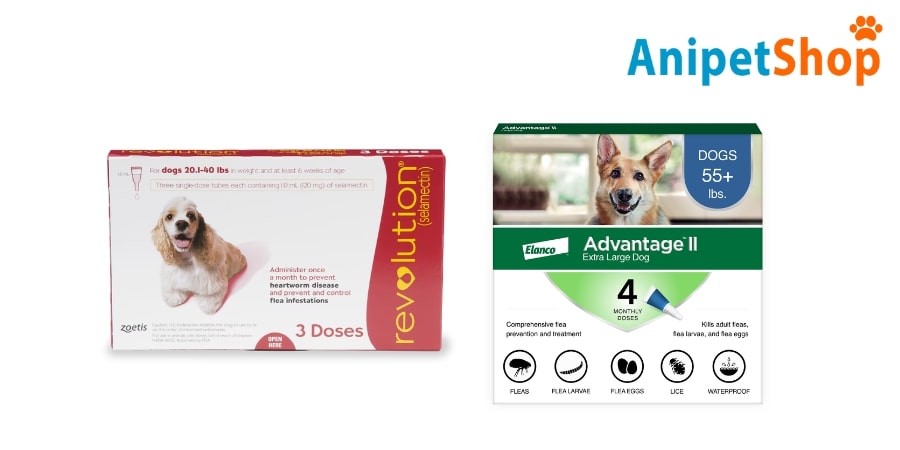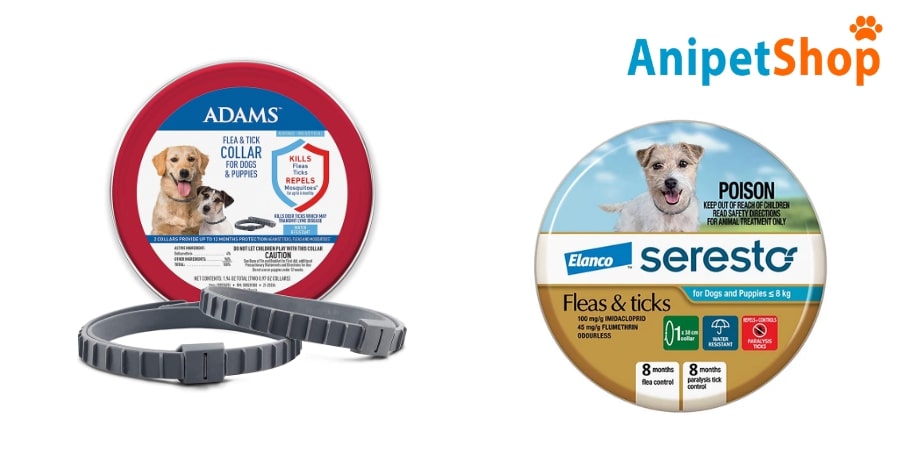What Are the Best Options to Kill Ticks on Your Dog Quickly?
Ticks are not just annoying—they can be dangerous to your dog’s health, transmitting diseases with just one bite. Whether your dog is a city dweller or loves exploring the great outdoors, ticks can find their way onto your pet. But how can you quickly eliminate these unwelcome guests? In this guide, we’ll dive into the best options to kill ticks fast, from powerful oral medications to effective topical treatments and long-lasting tick collars. Discover the best ways to keep your dog tick-free and healthy.
Key Takeaways
- Regularly administering tick medications is the most effective way to kill ticks on your dog. These treatments prevent ticks from attaching, significantly reducing the risk of tick-borne diseases.
- The top options for tick control include oral medications, topical treatments like Bravecto, and tick collars such as Seresto or Preventic.
- Natural remedies like apple cider vinegar and essential oils can help repel ticks, but they should be used cautiously and complement other treatments.
- Avoid ineffective or harmful remedies like low-quality tick collars, homemade essential oil mixtures, and garlic supplements, as they can be unsafe for dogs

How Do Tick Medications Work?
It affects the nervous system of ticks, preventing them from completing their blood meal and ultimately killing them. This prevents the ticks from transmitting diseases to your pet
There are three main types: oral, topical, and collars.
Oral Tick Medications

Oral tick meds offer a simple and effective way to keep your dog tick-free. These chewable tablets are easy to give and usually taste great to dogs. Once your dog swallows the tablet, it works to kill ticks before they can latch on and spread diseases. Most oral tick meds protect for a month, but options like Bravecto last up to 12 weeks, ensuring your dog stays safe with regular doses.
Make sure your dog eats the entire dose to ensure it works properly. Many tablets are flavored to make them tasty, so your dog thinks it’s getting a treat.
These meds work by circulating through your dog’s bloodstream, acting on ticks when they bite. This means they guard every inch of your dog’s body, offering full coverage. They’re especially good for dogs that swim or bathe often since they don’t wash off.
However, it’s important to note that the effectiveness of oral tick medications can vary. A study by Northwest Animal Hospital found that within two weeks of administering a monthly oral tick medication, less than one-third of ticks were killed within 12 hours. This delay in tick elimination means that diseases like Lyme, Anaplasma, and Ehrlichia may still have a chance to infect your dog.
Here are some common oral tick medications for dogs:
- Bravecto Chews (fluralaner): provides 12 weeks of continuous protection against fleas and common tick species, including black-legged ticks, American dog ticks, and brown dog ticks, killing approximately 99% of fleas and ticks within a few hours of administration.
- Nexgard (afoxolaner): kills fleas & ticks within 30 minutes and ticks within 48 hours.
- Simparica Trio (Sarolaner / sarolaner / moxidectin / pyrantel): provides quick and lasting protection against heartworms, fleas, ticks, roundworms, and hookworms.
To maximize protection, adhere strictly to the dosing schedule. Missing a dose can leave your dog vulnerable to ticks. To stay on track, use phone reminders or mark your calendar. Additionally, regularly check your dog for ticks, even when they are on medication, since no solution is perfect.
While oral medications offer convenience, they may not be suitable for all dogs. If your dog has a sensitive stomach, you might consider using topical treatments instead. Always consult with your veterinarian to determine the best tick prevention method for your pet, taking into account factors such as your dog’s health, lifestyle, and the prevalence of tick-borne diseases in your area.
Topical Tick Medications

Applying topical tick treatments is a handy and effective way to keep your dog tick-free. These treatments repel and kill ticks on contact, lowering the risk of tick-borne diseases. Topical treatments quickly disrupt the tick life cycle. They often contain active ingredients like fipronil and permethrin, targeting ticks without harming your dog.
Here are recommended oral ticks medications for dogs without vet prescription:
- Bravecto Spot-On (fluralaner): provides 12 weeks of continuous protection against fleas and common tick species, including black-legged ticks, American dog ticks, and brown dog ticks, killing approximately 99% of fleas and ticks within a few hours of administration.
- Advocate (Imidacloprid and Moxidectin): offers comprehensive protection and work quickly eliminate existing fleas, heartworms, intestinal worms, and other common parasites.
- Stronghold (Selamectin): provides comprehensive protection against fleas, ear mites, sarcoptic mange, and heartworms.
According to Northwest Animal Hospital, they advise using Vectra 3D, a monthly topical treatment that combines a repellent with a tick-killing medication. This product effectively eliminates ticks, fleas, mosquitoes, and biting flies, while also preventing up to 80% of these pests from even landing on a dog. For the small percentage of ticks that do manage to land, the medication acts quickly, immobilizing them so they cannot walk or attach to the skin. Within minutes, these ticks fall off and die, ensuring they pose no threat to the pet, family, or other animals.
Most pets tolerate topical tick medications well, but if your dog has sensitive skin, a history of skin irritation, or loses fur where the medication is applied, you might want to consider using an oral tick medication instead.
Additionally, if you have a cat that likes to groom your dog, it’s safer to opt for an oral tick medication. This is important because dog tick preventatives are toxic to cats and can be fatal. If you choose a topical treatment, make sure your pets don’t groom each other for at least 24 hours after application to keep your cat safe.
Combine these treatments with regular tick checks to boost protection and keep your furry friend safe.
Tick Collars

Tick collars are an effective and long-lasting solution to protect your dog from ticks. By placing a collar around your dog’s neck, it releases active ingredients that repel and kill ticks, providing up to 8 months of continuous protection without the need for frequent reapplication.
When choosing a tick collar, it’s important to select one made from high-quality materials. Trusted brands like Seresto and Preventic are known for their reliability, often containing ingredients like imidacloprid or amitraz that target ticks at all life stages—larva, nymph, and adult.
Proper fitting is crucial for effectiveness. The collar should be snug but not too tight; you should be able to comfortably fit two fingers between the collar and your dog’s neck. Trim any excess length to prevent your dog from chewing on it or experiencing irritation.
Tick collars are especially ideal for dogs who spend a lot of time outdoors or in tick-prone areas like forests and grasslands. They offer a hassle-free solution by eliminating the need for monthly treatments. Just remember to periodically check the collar for signs of wear and tear, and replace it as recommended.
Using a tick collar provides a simple, durable way to keep your dog safe from ticks, allowing you to enjoy more outdoor adventures with peace of mind.
Natural Options to Prevent or Treat Ticks
Natural options for preventing ticks are somewhat limited, but a few methods can help. The most reliable approach is to perform daily tick checks on your dog, especially if they have long fur. Regular checks, ideally once or twice a day, are essential because ticks can transmit diseases like Lyme disease if attached for too long.
Learn more about identifying and removing ticks: https://anipetshop.com/dog-care/ticks-on-dogs/
You can also use natural repellents like apple cider vinegar, mixed 1:1 with water, and sprayed on your dog’s coat. Essential oils like lavender, eucalyptus, and peppermint work similarly—just mix a few drops with water and spray, avoiding sensitive areas. Neem oil is another effective option, either applied directly or diluted. Additionally, diatomaceous earth can be lightly sprinkled on your dog’s coat and bedding, though it should be food-grade and used sparingly. You can also consider bathing for your furry friend, this chance can help you get rid of ticks.
To further discourage ticks, keep your yard tidy by regularly mowing the lawn and trimming plants. Consistent grooming, combined with these natural methods, can help keep your dog tick-free.
Tick Remedies for Dogs to Avoid and That Don’t Work
Many tick remedies found online either don’t work or can harm your dog, so it’s important to know which ones to avoid. Over-the-counter tick collars not endorsed by veterinarians often contain low-dose pesticides that may not effectively kill or repel ticks and could cause skin irritations or allergic reactions. Always consult a vet before choosing a tick collar.
Homemade essential oil treatments, like tea tree or lavender oil, may seem natural but can be toxic if not used properly. Symptoms of toxicity include drooling, vomiting, and seizures, making it safer to use proven treatments instead.
Garlic supplements are another remedy to avoid, as garlic is toxic to dogs and can cause hemolytic anemia, where red blood cells are destroyed faster than they can be made. Even small amounts over time can be harmful.
Using dish soap is also ineffective for killing ticks. It’s better to rely on vet-recommended shampoos if necessary and ensure your dog is on preventative medications. Additionally, alcohol should not be applied directly to your dog’s skin, though it can be used to kill a tick after it has been removed.
Finally, steer clear of flea and tick powders with unknown ingredients, as they may contain unregulated chemicals that pose serious health risks. Always seek veterinary recommendations to keep your dog safe.
Frequently Asked Questions
Why might I see a tick on my treated pet?
Even with tick prevention, you may still find ticks on your pet for several reasons:
- Pre-existing Ticks: Ticks that were already attached before treatment may remain for a while before dying.
- Killing vs. Repelling: Some treatments kill ticks only after they attach, so you might see them on your pet’s fur.
- Resistance: Ticks can develop resistance to certain products, reducing their effectiveness.
- Improper Application: If the treatment wasn’t applied correctly, it may not work as intended.
- High Tick Exposure: In heavily infested areas, ticks may attach before the preventive can act.
If you find ticks, remove them promptly and monitor your pet for any signs of illness. Consult your veterinarian if you have concerns.
Learn more about treating tick bites here.
Are There Any Side Effects of Tick Prevention Treatments?
Yes, tick prevention treatments can have side effects. Common reactions include skin irritation, vomiting, or lethargy. Always read the product labels carefully and keep a close eye on your dog after application. If you notice any worrisome symptoms, contact your vet right away.
What is the least toxic tick prevention for dogs?
Natural Remedies
- Coconut Oil: Safe to apply directly to your dog’s coat as a tick repellent.
- Beneficial Nematodes: Microscopic worms that target tick larvae in your yard without harming pets or plants.
Less Toxic Chemical Options
- S-Methoprene and Pyriproxyfen: Found in some flea and tick products, these are less toxic than traditional pesticides.
- Oral Medications: Options like lufenuron or spinosad are generally safer and leave no residues on fur.
Recommended Products
- Vet’s Best Flea & Tick Yard & Kennel Spray: A natural spray using essential oils.
- Simparica Trio: A prescription chewable that effectively protects against fleas and ticks.
Is dog tick medicine toxic?
Dog tick medicines can be toxic if misused. To minimize risks:
- Consult your vet before starting any flea/tick prevention
- Follow dosage instructions carefully
- Monitor for adverse reactions after applying treatments
- Consider less toxic options like natural remedies or safer chemicals
If toxicity symptoms occur, wash off the product and seek vet care immediately. Proper use and precautions are key to protecting your dog from ticks while minimizing health risks.
What Common Symptoms Indicate Tick Infestation on a Dog?
If your dog is scratching incessantly, discovering ticks on its skin, or losing hair, it may have a tick infestation. Look for signs like redness or swelling, too. If your dog seems listless or has a fever, inspect for ticks.
Conclusion
Ensuring your dog stays tick-free is crucial for their health and well-being. The right tick prevention method can make all the difference. Whether you opt for oral medications, topical treatments, or tick collars, each offers a powerful defense against these pesky parasites. Oral medications provide full-body coverage and are ideal for dogs that swim or bathe frequently. Topical treatments work quickly on contact, repelling and killing ticks before they can bite. Tick collars, with their long-lasting protection, are perfect for dogs that spend a lot of time outdoors.
It’s also worth considering natural remedies like apple cider vinegar or essential oils as additional protective measures. However, stick to proven methods for the best results. Remember, regular checks and maintaining a consistent prevention routine are key to keeping your dog safe. By combining the best treatment options with regular monitoring, you can effectively protect your dog from ticks, ensuring they remain happy, healthy, and free to enjoy their adventures without worry. Choose the right solution for your dog and stay proactive in your tick prevention efforts.
Reference:
- Northwest Center for Alternatives to Pesticides. (n.d.). Fleas: Identification, prevention & control. Pesticide.org. https://www.pesticide.org/fleas
- Durden, L. A., & Hinkle, N. C. (2016). Fleas (Siphonaptera). In: Medical and Veterinary Entomology. PubMed Central. https://www.ncbi.nlm.nih.gov/pmc/articles/PMC4977707/
- Northwest Veterinary Clinic. (n.d.). Tick prevention: Best ways to protect your dog. Northwest Veterinary Clinic. https://nwveterinarian.com/tick-prevention-best-dog/
- ResearchGate. (2023). What kills ticks on dogs instantly? ResearchGate. https://www.researchgate.net/publication/382463513_What_Kills_Ticks_on_Dogs_Instantly
Lily Watson is an author specializing in veterinary care in Australia. With a profound passion for animal welfare and a solid foundation in veterinary science, Lily has dedicated herself to disseminating valuable knowledge and information for both pet owners and professionals in this field.

